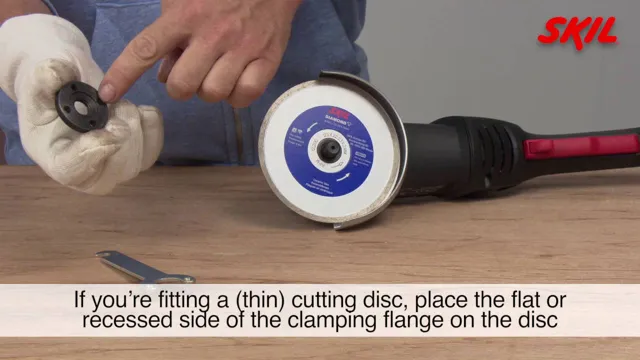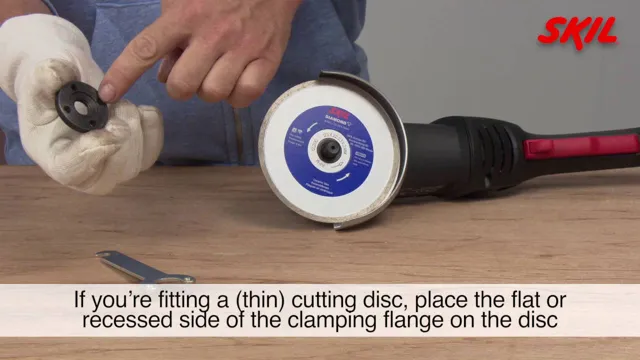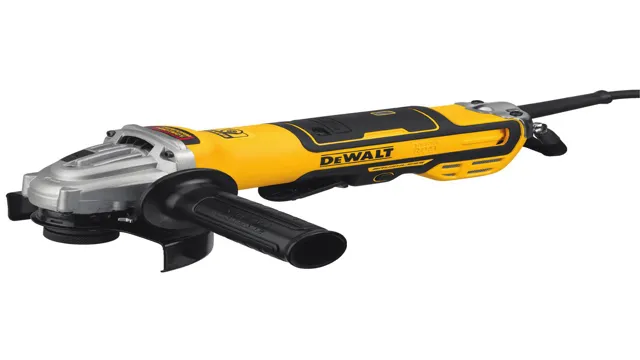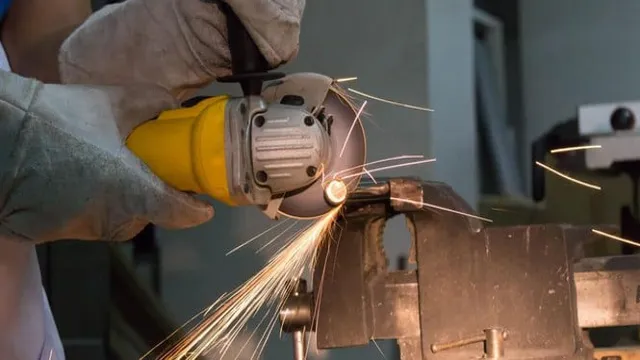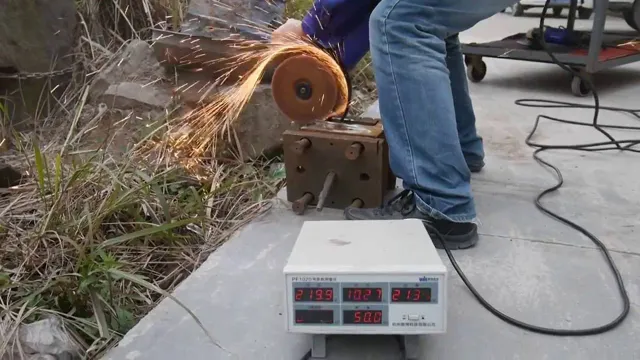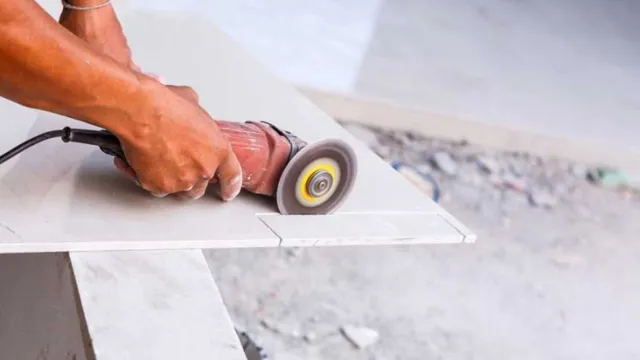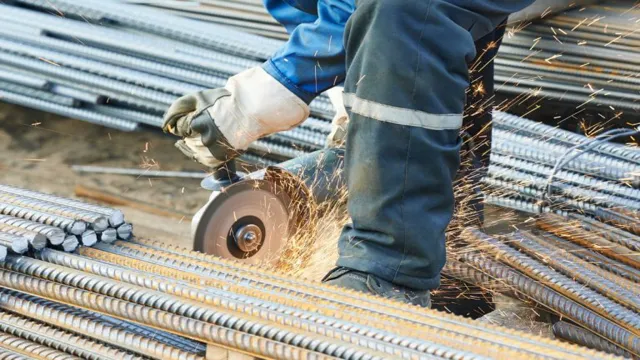What Can an Angle Grinder Do: Top Uses and Benefits for DIY Enthusiasts
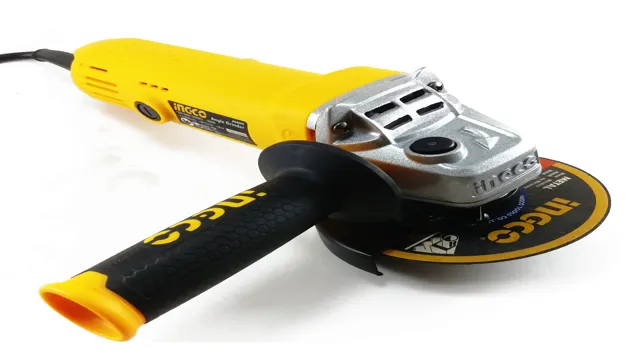
Do you ever wonder how professionals get their cuts so precise and clean? The secret is in the power of an angle grinder. This versatile tool can not only cut through tough materials like metal and concrete, but it can also sand and grind for a smooth finish. With the right attachments, an angle grinder can replace several tools in your kit, saving you time, money, and effort.
Whether you’re a seasoned DIYer or just starting out, adding an angle grinder to your arsenal can revolutionize the way you tackle projects. So, let’s dive into the power of this mighty tool and see how it can transform your next project.
What is an Angle Grinder?
An angle grinder is a versatile power tool that uses a rotating disc to cut, grind, sand, and polish various materials such as metal, stone, and wood. It can be used for a variety of DIY and professional tasks, making it a must-have for any workshop or toolbox. Angle grinders come in different sizes and with different discs to suit various applications, from removing rust or paint from metal surfaces to cutting concrete, ceramic tiles, and bricks.
They can also be used for shaping objects, sharpening blades and tools, and even carving wood. In short, an angle grinder is a powerful tool that can tackle a wide range of projects, making it an indispensable tool for any DIY enthusiast or professional. If you’re wondering what can an angle grinder do, the answer is, a lot! Just make sure to wear protective gear such as safety glasses and gloves and use the tool with caution and respect for its power.
Definition and Types
An angle grinder is a versatile tool that is used for a wide range of cutting, grinding, and polishing applications. It is essentially a handheld power tool that features a rotating abrasive disc to help cut through tough materials with ease. The angle grinder, sometimes referred to as a side grinder or disc grinder, can be powered by different energy sources such as electricity, petrol, or compressed air.
There are various types of angle grinders available, each with its own unique characteristics that suit specific applications. For instance, small angle grinders with discs under 7 inches are commonly used for cutting and grinding while large angle grinders (9 inches and above) are more useful for heavy-duty tasks that require significant power and speed. There are also cordless angle grinders that are more convenient for mobility and portability.
With their versatility and variety of options, angle grinders have become an essential tool for DIY enthusiasts, metal fabricators, and construction workers alike.
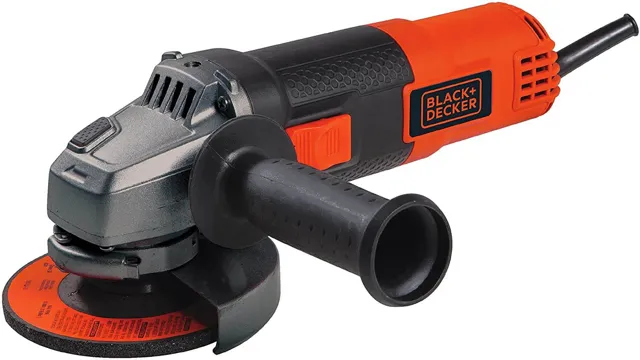
Components and Functions
An angle grinder is a handheld power tool used for a wide range of tasks such as grinding, cutting, and polishing various materials such as metal, concrete, and tile. This versatile tool consists of several components that work together to deliver its functions, including a motor, a spindle, a disc guard, and a side handle. The motor is the heart of the angle grinder delivering the power to turn the spindle, which is the part that holds the disc.
The disc guard is an essential safety feature that protects the user from debris flying off the disc during operation. The side handle is a component that enhances control and stability while using the tool. The angle grinder can perform various functions depending on the disc attached to it.
For example, a cutting disc can be used to cut through metal pipes or concrete slabs, while a sanding disc can be used to smoothen uneven surfaces. Using an angle grinder requires adequate safety precautions as it can generate sparks and a lot of dust, requiring personal protective equipment such as safety glasses, gloves, and a face mask to be used appropriately. Overall, the angle grinder is a versatile and powerful tool commonly used in construction, metalworking, and DIY projects, making it an essential tool for many professionals and hobbyists.
By understanding its components and functions, one can choose the right type of angle grinder and use it safely and effectively for various tasks.
Uses of an Angle Grinder
An angle grinder is a versatile power tool that can be used for a wide variety of tasks. One of its most common uses is for grinding and cutting materials such as metal, concrete, and tile. With the right attachments, an angle grinder can also be used for sanding, polishing, and buffing, making it a great tool for DIY projects and home improvement tasks.
It can even be used for removing rust and corrosion from metal surfaces. The power and speed of the angle grinder make it an ideal tool for tackling tough projects quickly and efficiently. So, if you’re wondering what an angle grinder can do, the answer is a lot.
Whether you’re a professional contractor or a DIY enthusiast, this tool is a must-have in your toolkit.
Metalworking
Metalworking is a craft that requires precision and the right tools to achieve the best results. One tool that is essential for any metalworker is an angle grinder. An angle grinder is a versatile tool that can be used for a variety of purposes.
It can be used to cut, grind, sand, and polish metal surfaces. Whether you are working on a small DIY project or a large industrial job, an angle grinder can come in handy. It is perfect for shaping, smoothing, and sharpening metal pieces.
The various attachments available for angle grinders make it possible to use the tool for different purposes. For example, the cutting disc attachment can be used to cut through different types of metals. The wire brush attachment can be used to clean off rust and debris from metal surfaces.
With the right knowledge and technique, an angle grinder can be a powerful tool in achieving excellent results in metalworking.
Cutting and Grinding Tiles and Concrete
An angle grinder is a versatile tool that is useful for a variety of cutting and grinding tasks. When it comes to tiles and concrete, an angle grinder can be used to cut and shape tiles to fit specific areas or to remove small areas of concrete that need to be replaced. With the right blade, an angle grinder can also be used to grind down rough edges on tiles and smooth out the surface of concrete.
This tool is particularly handy for those who like to take on DIY projects around the house. One thing to keep in mind is that an angle grinder can be quite powerful, so it’s important to use it with caution and to wear protective gear such as gloves and safety goggles. But as long as it’s used correctly, an angle grinder can be a valuable addition to any DIYer’s toolkit.
Sharpening Tools and Blades
Angle grinder An angle grinder is a versatile power tool that can be used for various tasks that require cutting, grinding, sanding, and polishing. It is commonly used in metalworking, construction, and woodworking industries. The tool can handle different types of materials such as concrete, tile, metal, and wood.
Its versatility lies in the fact that it can be fitted with different types of blades and discs that are available in the market. Some of the common accessories include diamond discs, grinding wheels, flap discs, sanding discs, and wire brushes. These provide different levels of abrasion and precision depending on the job at hand.
One of the major advantages of an angle grinder is that it is portable and can be used in locations where other power tools may not be feasible. However, it is important to note that the tool can be dangerous if not handled properly. Therefore, it is important to use protective gear such as goggles, gloves, and masks when using the angle grinder.
Safety and Precautions
Angle grinders can be incredibly versatile power tools, but they can also be dangerous if not used properly. One of the main things an angle grinder can do is cut through a variety of material, including metal, tile, and masonry. It can also sand or polish when outfitted with the right attachments.
However, it’s important to take safety precautions to ensure nothing goes wrong. Always wear eye and ear protection, and consider using a dust mask to protect against debris. Don’t wear loose clothing or jewelry that could get caught in the grinder, and ensure you have a firm grip on the tool at all times.
Keep a safe distance from others, and make sure the work area is clean and free from clutter. It’s also important to use the correct disc for the job at hand, and never force the grinder to do something it can’t handle. With these precautions in mind, an angle grinder can be a powerful tool in the hands of those who know how to use it safely.
Personal Protective Equipment
When it comes to working in hazardous environments, Personal Protective Equipment (PPE) is an essential tool for ensuring safety and reducing the risk of injury or illness. PPE includes a range of equipment, including gloves, safety glasses, helmets, respirators, and more. The use of PPE is mandatory in many workplaces to protect workers from hazards such as chemicals, heavy objects, and sharp objects.
It is crucial to use the correct PPE for the job to ensure maximum protection. Wearing PPE not only protects workers, but it also protects others from exposure to hazardous materials. For example, wearing a respirator while working with chemicals not only keeps the worker safe but also prevents fumes from escaping into the air and potentially harming others nearby.
Employers must provide the necessary PPE to their workers and ensure that it is in good condition and properly maintained. It is important to note that PPE is only a part of a comprehensive safety program. Workers must also receive proper training on how to use and care for their equipment correctly.
They should also be aware of the potential hazards they may encounter and how to avoid them. By combining the use of PPE with proper training and hazard awareness, workers can help reduce the risk of accidents in the workplace. In conclusion, PPE is an integral part of keeping workers safe on the job.
It is critical to use the correct equipment and receive proper training to ensure maximum protection. Employers must provide PPE to their workers and ensure that it is in good condition. By taking these precautions, workers can perform their duties safely and with confidence.
Proper Handling of Angle Grinder
Angle Grinder When it comes to using an angle grinder, safety is of utmost importance. Before using the tool, it is essential to review the manufacturer’s instructions and make sure to wear appropriate safety gear. Safety glasses, gloves, earplugs, and dust masks should be worn to protect against flying debris and dust.
It is also important to have a clear working area and secure the workpiece. Ensure that the grinder’s wheel guard is in place and properly adjusted to deflect sparks and debris away from the user. Avoid holding the tool by the guard or using it for operations not intended by the manufacturer.
Additionally, do not force the tool or change the grinding wheel without consulting the instructions. By following these precautions and handling the angle grinder properly, accidents can be avoided, and the tool can be used effectively.
Conclusion and Recommendation
In conclusion, an angle grinder is like a multifaceted superhero tool that can slice through metal, shape and smooth concrete, cut tiles for your backsplash, remove rust and even sharpen your lawn mower blades. It’s the ultimate problem solver in your toolbox that can transform any project from mediocre to miraculous. So, if you want to take your DIY game to the next level, get yourself an angle grinder and unleash its superpowers!”
FAQs
What materials can I cut with an angle grinder?
Angle grinders can cut through a variety of materials including metal, tile, concrete, brick, and stone.
How do I change the disc on my angle grinder?
To change the disc on your angle grinder, first, make sure it is unplugged. Then, remove the locking nut and flange from the spindle and replace the disc before reattaching the nut and flange.
Can I use an angle grinder to sand wood?
Yes, you can use an angle grinder with a sanding disc to sand wood, but it is not the best tool for the job. A random orbital sander is a better choice for sanding wood.
How do I safely use an angle grinder?
Always wear protective gear, such as goggles, gloves, and a dust mask when using an angle grinder. Never remove the guard or handle from the grinder and keep a firm grip on the tool at all times.
Can I use an angle grinder as a cut-off saw?
Yes, an angle grinder can be used as a cut-off saw with the proper blade attachment. However, a dedicated cut-off saw is a safer and more efficient option for this task.
What size angle grinder should I use for cutting metal?
A 4.5-inch angle grinder is suitable for cutting metal up to 1/8 inch thick, while a larger 7-inch or 9-inch grinder can handle thicker metal pieces.
How do I sharpen blades with an angle grinder?
To sharpen blades with an angle grinder, first, secure the blade in a vice. Then, use a grinding disc to sharpen the edge of the blade at the angle required by the manufacturer.

